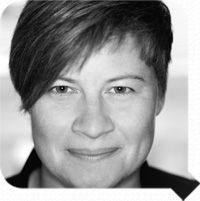Should designers ever turn down new work?
Eight leading designers discuss cigarettes, gangs and armaments manufacturers.
It can be tempting to say yes to every new design project that comes your way, but there are myriad reasons to turn down prospective clients. Questionable ethics, impossible budgets, dodgy politics... It might be down to a good, old-fashioned clash of personality or values.
The trick is being able to recognise when work might not be right for you. To that end, we asked seven leading designers what would drive them to say no to new work...
Not a good fit with company values

Founder and managing director of Firebelly Design Dawn Hancock comments: "We turn away work every day. Most times we're just not able to take on the project with our schedule or for the budget they may have. A handful of times we've passed because it was not a good fit with our values.
"We've been approached to work on new product launches that touted a 'green' or 'healthy' alternative to a main line. In every case we passed, because we felt they were simply trying to sell to a certain demographic, rather than truly changing their business to be more responsible."
Dealing with mediocre consultancy

"Aside from the personal moral compass that guides me away from the likes of armaments manufacturers, religious organisations and zoos, I've learnt that nothing is more debilitating than mediocre consultancy," says logo and font specialist Miles Newlyn.
"For the design work that I enjoy doing to have a chance of being accepted by the client, the consultancy must be creative, insightful and surprising."
Following the moral compass

Freelance designer and animator James Wignall says: "A number of years ago, I was approached by a studio who wanted to make a cigarette commercial. As I read the brief, it turned out they were marketing a cigarette that was clearly aimed at vulnerable teenagers. After contemplating whether or not to take the job for roughly 0.2 seconds, I politely declined."
Differing opinions

"I worked on a project about people who live and work in an area of rampant gang activity," comments graphic designer Eileen Macavery Kane. "I also had a client who I did collateral marketing material for. She knew about the project, and talked to me about it. During our discussions it became clear that she held some views that I felt were racist. I decided to end our business relationship and stopped doing work for her; our friendship ended too."
Too many politics

Chief creative officer at SapientNitro Worldwide Gaston Legorburu comments: "There are causes that I won't take up. Recently I wouldn't work on tobacco products, but actually I have no problem working on alternatives for that stuff – whereas I think some people just draw the line on those things. And I like to stay away from politics at all costs. Even though it can be interesting, I don't like doing that. I wouldn't suggest anybody did either."
Too close to existing commitments

"From time to time we turn down clients because they are too close to existing commitments," says designer and co-founder of Chermayeff & Geismar & Haviv, Ivan Chermayeff. "We can’t accept or produce products which, in my opinion, would be best forgotten, or for some other reason which might have to do with restrictions on an outcome with which we don’t agree. We’re not difficult, just careful."
Trust your instincts

Freelance designer and founder of BP&O Richard Baird says: "Typically, reasons to turn down projects would be those that I can’t fully grasp, or something I believe may have a detrimental environmental or health impact. Instinct, founded on an experience of working with difficult clients, also plays a crucial role. Finally, if I receive calls or emails that I find unnecessarily rude or aggressive, I'll certainly consider if it's worth the hassle."
Discipline dependent

Freelance graphic designer and UX designer at Amazon Amara Poolswasdi says: "I sometimes turn down work for practical or ethical reasons. As a freelancer, certain projects were also no longer within the scope of expertise I wanted to be known for. When trying to transition from print to web design, I made a decision to take on less print work."
Image: Firebelly Design's branding for Divvy. The studio was an early advocate for socially responsible design, and refuses to collaborate with clients that don’t value its ethics of 'good design for good reason'.
This article first appeared in Computer Arts issue 231, Self-Promo to Suit You – 100 pages on how to win more design work by playing to the strengths of your personality, and much more.
Get 10 free issues of Computer Arts
Take out a two-year subscription to Computer Arts before the end of October, and you'll get an incredible 10 free issues of the world's leading design magazine.
Simply head over to the CA subs page, select Europe or Rest of World from the Delivery Region menu, and choose 'Credit/Debit Card or PayPal 2 Year' from the three options.

Thank you for reading 5 articles this month* Join now for unlimited access
Enjoy your first month for just £1 / $1 / €1
*Read 5 free articles per month without a subscription

Join now for unlimited access
Try first month for just £1 / $1 / €1
Get the Creative Bloq Newsletter
Daily design news, reviews, how-tos and more, as picked by the editors.
The Creative Bloq team is made up of a group of design fans, and has changed and evolved since Creative Bloq began back in 2012. The current website team consists of eight full-time members of staff: Editor Georgia Coggan, Deputy Editor Rosie Hilder, Ecommerce Editor Beren Neale, Senior News Editor Daniel Piper, Editor, Digital Art and 3D Ian Dean, Tech Reviews Editor Erlingur Einarsson and Ecommerce Writer Beth Nicholls and Staff Writer Natalie Fear, as well as a roster of freelancers from around the world. The 3D World and ImagineFX magazine teams also pitch in, ensuring that content from 3D World and ImagineFX is represented on Creative Bloq.
